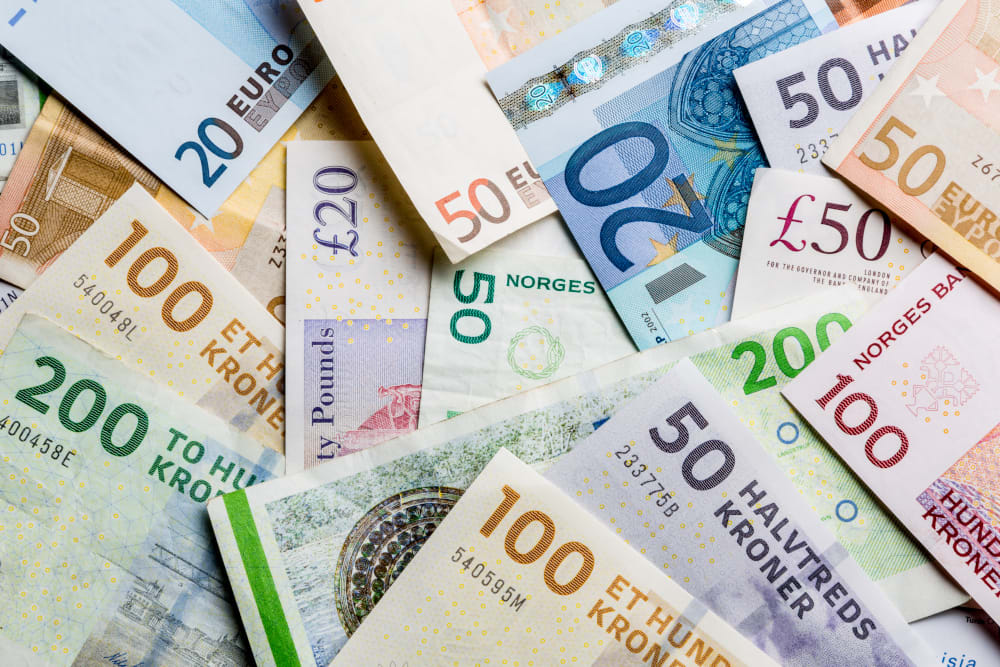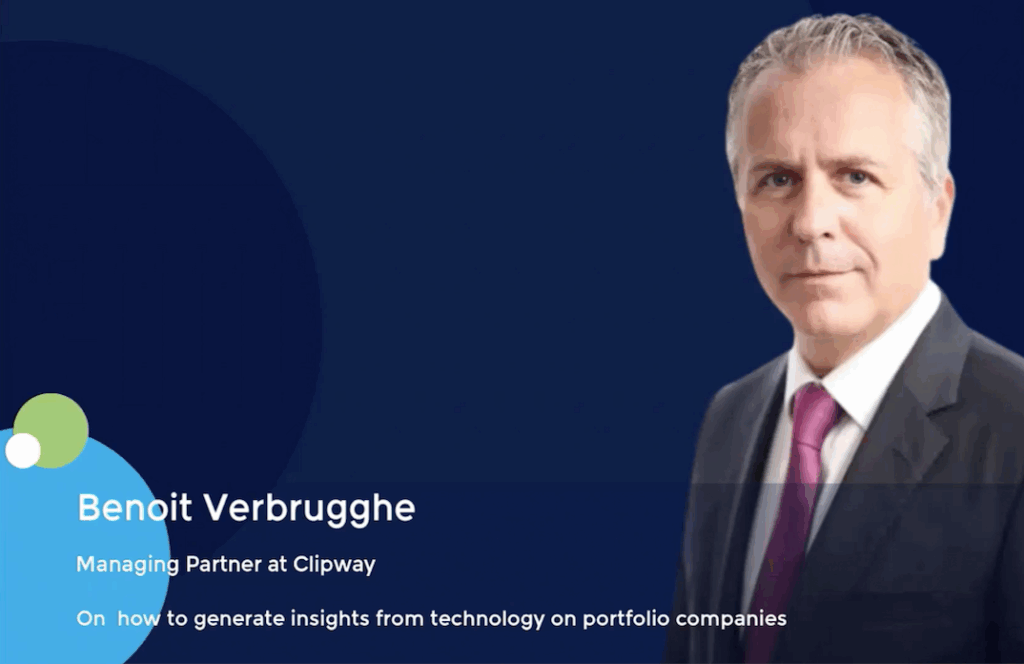Co-investment: How Asian GPs are responding to rising demand for direct exposure
Co-investment got serious for EQT Private Capital Asia in Fund VI about 10 years ago. The firm sourced USD 3.85bn from LPs and then invited them to put another USD 2bn to work in a few choice deals. Over half the co-investment went into a single transaction: the USD 4.3bn take-private of Nord Anglia Education in 2017, co-underwritten by Canada Pension Plan Investment Board (CPPIB).
Now, EQT is engaged in its most ambitious co-investment to date, and Nord Anglia is once again the target. Fund VI is making a full exit, with part of its stake going to Fund VIII; CPPIB is rolling over most of its position; Neuberger Berman is sharing the co-underwriter role; and an additional tranche is being syndicated to other LPs, including some that are not participants in EQT funds.
The syndication tranche alone amounts to at least USD 2bn, Mergermarket reported, while the deal values Nord Anglia at USD 14.5bn. It is enormous by Asian standards, but the judicious use of co-investment is not unprecedented.
The Fund VIII corpus of USD 11.2bn will be over 80% deployed once Nord Anglia closes. Even without that, EQT has generated USD 1 in co-investment for every USD 1 in the fund, with four out of 16 deals requiring cheques of more than USD 2bn, according to Nick Thorn, a managing director in EQT’s client relations and capital raising team. He declined to comment on the Nord Anglia transaction.
Not all LPs crave co-investment, but this surge in capacity over three vintages underlines how a new normal in Western markets has forced its way into Asia. Demand for direct deal exposure – in part as a fee mitigation tool – is at an unprecedented level in the large-cap space, and GPs are obliged to respond.
“It has become part of the business. If you aren’t creating co-investment equivalent to 50% of your fund size on a regular basis, you will fall below benchmarks for global funds,” said Lincoln Pan, a partner and co-head of private equity at PAG.
Co-investment came to 15% of PAG’s debut fund, which closed on USD 2.6bn in 2012. By Fund III, it was USD 2.25bn out of a USD 6bn corpus. The manager has already deployed nearly 40%, or USD 1.4bn, of Fund IV and facilitated USD 1.8bn in co-investment. Much of that went into Newland Commercial Management, a USD 8.3bn China co-underwrite with Abu Dhabi Investment Authority (ADIA) and Mubadala Investment.
The phenomenon increasingly extends into the middle market, where managers have achieved varying degrees of institutionalisation. GPs less familiar with co-investment or with fewer resources devoted to it often struggle to secure support. Moreover, they are pitching a shallow pool of repeat co-investors; many LPs express initial interest in participating but seldom follow through.
Yet co-investment has arguably never been more important. When a fundraise gets off to a stuttering start, it is the classic LP lure. When there is uncertainty regarding the size and timing of a final close, it enables managers to act on opportunities that might otherwise be beyond them.
“GPs are reaching out to us earlier in the process because they may not have the fund fully raised, visibility isn’t great, and even though they may hit target they don’t want to risk it,” said Amit Sachdeva, a managing director and head of Asia Pacific co-investment at AlpInvest Partners.
“We are also seeing more situations where, rather than underwrite say 15% of the fund in a single deal and then rely on reducing their exposure later through syndication, GPs today only underwrite what they want to hold at the end. Again, this means they reach out to us early to ensure they have enough support before making a bid.”
Underwriter’s block?
For AlpInvest, getting involved earlier invariably means participating in deals as a co-underwriter – working alongside the GP, signing the equity commitment letter, and sharing transaction costs. The firm closes 15-25 deals globally every year, with Asia accounting for 3-5, or 10%-15% of aggregate deployment. Co-underwrites have made up 80% of activity in the region over the past 18 months.
HarbourVest Partners tells a similar story. Fifteen years ago, Asia co-investment was in the low double-digit millions. Now it consistently exceeds USD 500m – or 10% of what the firm does globally – across about a dozen transactions. Co-underwriting makes up the bulk of this; HarbourVest doubts its scale of deployment would be possible if driven by post-agreement downstream syndication.
AlpInvest, HarbourVest, and Neuberger are members of a 6-8-strong fund-of-funds contingent that underpins a lot of mid-cap co-underwriting in the region, with the flexibility to commit anything from USD 10m to USD 150m. Active co-underwriters in the large-cap space are even fewer: CPPIB, ADIA, and Mubadala are joined by the likes of GIC and Ontario Teachers’ Pension Plan (OTPP).
Co-underwriting opportunities typically emerge when transactions are large relative to the size of the participating fund or involve specific competitive dynamics. Take-privates are perhaps the best example: GPs want to approach company boards with fully underwritten and financed proposals.
There is certainly more large-cap deal flow in Asia. Nearly 90 investments of USD 1bn or more have been announced since 2020, a 50% increase on the preceding five years, according to AVCJ Research. The USD 200m-USD 999m segment has swelled 22% over the same period.
While take-private volume is often swayed by the odd mega deal or by trends in specific markets, 60 private equity-backed transactions have been announced since 2020, up from 40 in 2015-2019.
Nevertheless, co-underwriting remains a tricky business. Take-privates aside, the big cheque writers – those capable of committing upwards of USD 300m – are sometimes reluctant to pick sides early in an auction process, one large-cap buyout manager observed.
“We want them to be with us all the way because our risk is underwritten, but what often happens is they hold back. There might be five bidders in a process and a sovereign wealth fund is an LP in three of them. It is confident enough of putting USD 300m to work with any of the three, so it waits until the structure, terms, and pricing are in place, and then they decide,” the manager explained.
This has led to very loose definitions of co-underwriting. Strictly speaking, co-underwriters share in the deal risk and are rewarded with an outsized portion of the equity. The reality can be different.
“There is a familiar list of what’s negotiated with co-underwriters – a share of economics, enhanced information rights, and other bespoke governance rights like a board seat or board materials,” said Shawn Yang, a partner at law firm Debevoise & Plimpton.
“That said, co-underwriter is a bit of an amorphous term and can describe someone who is a true price setter or someone who just wrote a large cheque. Where you fall within that spectrum will likely affect the terms that are negotiated.”
Various aspects of co-underwriting might discomfort LPs, he added. These include unwillingness on the part of the manager to accommodate compliance requirements for zero-fee co-investment, reputational risks of being mentioned alongside a deal before completion, and the prospect of allocating budget to cover ongoing expenses or broken deal costs if there is no completion.
Industry participants point to instances where budgeting was a stumbling block. For example, LPs have issued letters guaranteeing USD 200m-plus to syndications as a next-best option because they aren’t set up to accommodate broken deal costs. In other situations, transaction speed or the balance of power between GP and LP means risk-sharing provisions aren’t put in place.
“There are lots of different interpretations of co-underwriting – maybe the GP really needs the capital, and no agreement is signed on fee-sharing. Those dynamics exist because the GP feels no one partner can provide exactly what it needs,” said Kelvin Yap, a managing director at HarbourVest.
Mix and match
Difficulties with co-underwriting emphasize broader challenges with direct participation in deal flow. Part of HarbourVest’s value proposition as a co-investor is being easy to work with: giving a quick no to opportunities that don’t pass key risk criteria; fitting in with the manager’s timelines when it decides to act on an opportunity; and providing consistency and transparency in its internal sign-off processes.
This resonates because many LPs are unable to meet those requirements. The large-cap buyout manager only considers 15%-20% of approximately 100-plus LPs to be serious co-investors, even though an inverse proportion might claim this status. Consequently, this manager and his peers are careful when deciding how many – and which – investors to invite into different processes.
“For a deal worth USD 800m with USD 100m of co-investment, it is not operationally efficient to have 10 groups each putting in USD 10m. But with a USD 2bn transaction where we aim to keep the fund commitment at around USD 700m, there is a great opportunity to bring in a range of investors to cover that USD 1.3bn,” said EQT’s Thorn.
“I look at a bigger co-investment a bit like building a house – you first build a strong foundation, then you construct the house using a variety of materials, both large and small, but every piece plays an important role no matter the size.”
It is all zero management fee and zero-carried interest. There are some holdouts in Asia’s middle market that still get carry on co-investments, but they are dwindling in number. Meanwhile, a handful of managers still have co-investment sidecars that generate economics. Hahn & Company in South Korea and Australia-based turnaround specialist Allegro Partners are two examples.
These are described as vehicles that allow managers to act quickly and maintain a competitive edge when they identify larger opportunities (and LPs with exposure to both GPs claim to have co-invested outside of these sidecars with no fees). India’s ChrysCapital Partners wants to follow similar urges, but it takes a different approach, relying heavily on co-underwriters coming into deals early.
“Occasionally, we come across attractive larger deals in our core sectors that we want to participate in,” said Gaurav Ahuja, a partner at the firm. “Co-investments allow us to write larger checks in such situations and not be disadvantaged versus global and regional managers. There’s no compulsion to do large deals, it’s driven by what attractive deals in our core sectors we see in the market.”
This first happened in 2016 and there have only been a handful of instances to date. Notably, ChrysCapital won a USD 325m investment in Mankind Pharma from under the noses of two global GPs in 2018 with support from Adams Street Partners, GIC, HarbourVest, and Pantheon. They provided two-thirds of the equity, according to Ahuja. Mankind went public last year.
Co-investment has featured alongside every Navis Capital Partners fund since the late 1990s, but it is still limited in terms of the quantum of capital and number of participants. There has never been any co-underwriting. One side letter provision remains from the early days: the GP receives economics on co-investment once deployment reaches a certain threshold, usually tied to an LP’s fund commitment.
“We use our discretion as to who we talk to, how much, and where we relax that sense of there being a ceiling on the no fees and carry amount,” said Nick Bloy, a co-managing partner at Navis, which mainly invests in Southeast Asia. “For a particularly strategic LP, or maybe one you are trying to coax into a new fund, you have the discretion to say the whole thing will be fee-free.”
Fundraising angles
The employment of co-investment as a strategic tool pre- or mid-fundraise is well established. In addition to inviting LPs to enter deals directly when there is uncertainty over fund size – some industry participants report an increase in warehousing, whereby LPs take a disproportionately large stake and sell a portion into the fund later – GPs often try to link co-investment to fund commitments.
Contracted agreements, or hard staples, are widely seen as unworkable. Rather, managers endeavour to make LPs favourably disposed towards participating in a fund by offering co-investment. While LPs resist having strings attached to these getting-to-know-you exercises, it sometimes happens.
“With a fast-moving co-investment, the provisions could end up being very loose, but we have seen situations where it has been airtight,” said Albert Cho, a partner at law firm Gibson Dunn.
“Typically, you participate in the co-investment on the understanding that you will come into the main fund. In the event you do not, either you get charged fees and carry on the co-investment or the existing fees and carry ratchet up.”
Glow Capital Partners took a slightly different approach. HarbourVest worked with the Australia-based private equity firm on its debut deal and then committed to the fund immediately before the final close, helping Glow to AUD 90m (USD 60m). This is still well short of the original AUD 300m target, but aggregate co-investment is expected to be at least equal to the size of the fund.
“That was part of the proposition I put to them: come into the fund and we give you a first look at everything. They found it attractive enough to come into a first-time fund, which is unusual,” said Justin Ryan, the firm’s co-founder and managing partner, although co-investment will still be offered to new LPs in the interests of relationship-building.
Ryan describes Glow as “acting as if we are AUD 300m and making up the difference with co-investment,” a phenomenon that some industry participants expect to become more widespread as managers in certain markets struggle to hit target on their funds. In this way, Glow and others may deliver a 1:1 co-investment ratio, but it is a function of their situation, not the norm.
ChrysCapital’s first co-investment came from Fund VI. At USD 1.25bn, Fund IX is more than twice as large and co-investment represents 20% of the corpus, which is three-quarters deployed. Singapore-based Novo Tellus Capital Partners delivered 20% on top of its USD 250m second fund. With Fund III closing at USD 510m last year, Wai San Loke, the firm’s managing partner, expects a similar percentage share.
Potentia Capital is relatively unusual in maintaining a 1:1 ratio through its first and second funds, despite upsizing from AUD 458m to AUD 635m. “We were careful in making sure Fund II didn’t grow to a level where we might have challenges in deployment,” said Michael McNamara, a partner at the firm. “And if we did find larger deals, we knew there would be plenty we could share with LPs as co-investment.”
Expectation management
It’s no coincidence that Potentia is based in Australia, Asia’s most fee-sensitive market where superannuation funds consider a 1:1 co-investment ratio to be a hard requirement. AustralianSuper is the poster child for this trend, having announced itself in North America by making USD 300m fund commitments and asking for 2x or 3x in co-investment on top, according to multiple sources.
This is most keenly felt in the large-cap space. A second manager outlined the difficulties of satisfying three anchor LPs that each commit USD 500m to a fund and want at least the same again in co-investment in markets with inconsistent deal big-ticket flow – especially now there’s a general aversion to China. He warned of a “negative spiral” as GPs push to match supply and demand.
The risks of negative selection bias are also highlighted by Steve Byrom, a founding partner at Australia-based LP advisory firm Potentum Partners. “We see co-investment most often when deals come along that are bigger than what the fund was designed to do. Alignment of interest is always a concern – you must think about people’s motives and incentives,” he said.
“If you’re under pressure to keep fees down or put out USD 2 in co-investment for every USD 1 of fund commitment, you will want to soak up everything thrown at you. But then there might be a rush of deals at the end of a fund because a GP promised to provide co-investment.”
LPs are tracking this at all levels of the market. One PE portfolio manager with a global insurance company noted that due diligence sessions on unusually large deals inevitably throw up questions about the manager’s motivations and whether it is trying to satisfy co-investment demand or outsource risk.
Sachdeva of AlpInvest added that these assessments are aided by having primary fund relationships with GPs. “It gives us visibility on what they have done successfully and unsuccessfully,” he said. “If they are trying to go beyond what we believe is the sweet spot for them, we will say no to do the deal.”
The more immediate concern for most middle market private equity firms in Asia, however, isn’t so much right-sizing a co-investment programme as ensuring it is fit-for-purpose in the first place.
Global and pan-regional firms have become well-oiled machines in managing processes and expectations. EQT, for example, includes co-investment consultation in its LP onboarding protocols and feeds the information into a customer relationship management (CRM) system that catalogues individual preferences across geography, sector, and size. Investor relations personnel then coordinate participation in specific deals.
Smaller managers aren’t expected to have this kind of operation, yet LPs readily distinguish the best from the worst. The former are structured in their approach, anticipating questions and proactively arranging calls for investors. The latter are often lax in disclosing information, including third-party due diligence reports, and ask for binding commitments while offering little certainty on allocations.
“Many firms are trying to institutionalise their co-investment processes. It’s hard, partly because you need someone senior in charge to make it work,” said Doug Coulter, a partner at LGT Capital Partners, another frequent co-investor in the region.
“Any forward-looking mid-market GP in Asia should be finding and hiring exceptional people to run their co-investment programmes. It will make a big difference when raising money in the next cycle. If you can solve for co-invest, you can solve for your next USD 1bn fund.”













